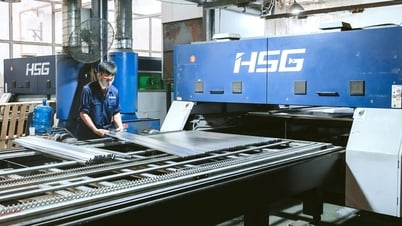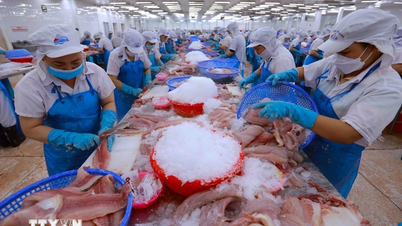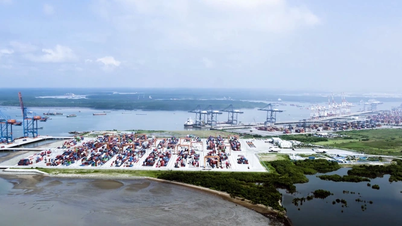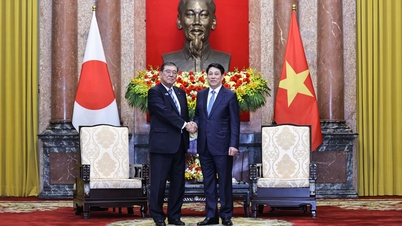According to President Donald Trump's announcement, the US will apply a 10% import tax on all imported goods into the country from April 5. That means all countries and territories will be subject to a common import tax of 10%. Then, from April 9, the country's largest trading partners will be subject to a higher reciprocal tax. For Vietnam, the reciprocal tax rate the US is expected to apply is 46%.
However, in Appendix II of the US Reciprocal Tariff Adjustment Order, some goods are not subject to reciprocal tariffs.
These items include:
- All items covered by other decrees
- Steel/aluminum products and automobiles and auto parts have been subject to tax under other regulations (in which, steel products are only subject to 25% tax and aluminum products are 10% under section 232 from 2018 to present).
- All other products listed in Annex II of this order, including copper, pharmaceuticals, furniture, lumber, semiconductors, certain critical minerals, energy, and energy products not available in the United States.
- All items may be subject to future tariffs.
- Gold bars.
Thus, items such as cars, auto parts, gold bars, aluminum, steel, copper, lumber, semiconductors, pharmaceuticals... from all countries including Vietnam will not be subject to the new reciprocal import tax rate of the US.

Gold bullion is not on the list of goods subject to the 46% US reciprocal tax. (Illustration photo)
The groups most affected
On the contrary, there are 6 groups that will be strongly affected if the US imposes high reciprocal tariffs on Vietnam. They are:
Textiles and garments: Vietnam exports to the US worth 16.1 billion USD. Textile and garment products processed from Vietnam will be at a disadvantage compared to other competing countries such as Bangladesh, India, China, Sri Lanka... with lower reciprocal tax rates.
Computers and electronic components: Export value to the US is 23.2 billion USD. Enterprises producing this item are mainly FDI enterprises from the US such as Intel, HP, Dell, Amkor. Faced with the risk of being subject to high reciprocal taxes, these enterprises can proactively shift part of their production in the product packaging finishing stage to countries with lower reciprocal taxes such as India, Indonesia, etc.
This also negatively impacts industrial real estate and logistics businesses.
Machinery, equipment and tools: Export value to the US 22 billion USD.
Wood and wood products: Export value to the US is 9.1 billion USD. In the past, with the advantage of low cost thanks to cheap labor and raw material costs because 70% of raw materials are domestic, Vietnam rose to the top 3 countries importing the most wood and wood products to the US.
If a reciprocal tax of up to 46% is imposed, the price of Vietnamese wood products will lose its competitiveness due to high costs, equal to that of the biggest competitor in the region, China.
Footwear: Export value of 8.3 billion USD. Thanks to the trend of shifting production chains to reduce dependence on China, in previous years many footwear manufacturers have moved their factories to Vietnam.
Seafood: Export value of 1.5 billion USD. Currently, key seafood export products are enjoying preferential export tax rates to the US such as shrimp and pangasius. Therefore, the imposition of reciprocal tax has a negative impact on businesses in this industry.
Vtcnews.vn
Source: https://vtcnews.vn/mat-hang-nao-cua-viet-nam-khong-chiu-thue-doi-ung-46-tu-my-ar935537.html


![[Photo] Chinese, Lao, and Cambodian troops participate in the parade to celebrate the 50th anniversary of the Liberation of the South and National Reunification Day](https://vphoto.vietnam.vn/thumb/1200x675/vietnam/resource/IMAGE/2025/4/30/30d2204b414549cfb5dc784544a72dee)
![[Photo] Cultural, sports and media bloc at the 50th Anniversary of Southern Liberation and National Reunification Day](https://vphoto.vietnam.vn/thumb/1200x675/vietnam/resource/IMAGE/2025/4/30/8a22f876e8d24890be2ae3d88c9b201c)

![[Photo] The parade took to the streets, walking among the arms of tens of thousands of people.](https://vphoto.vietnam.vn/thumb/1200x675/vietnam/resource/IMAGE/2025/4/30/180ec64521094c87bdb5a983ff1a30a4)


























![[Photo] Performance of the Air Force Squadron at the 50th Anniversary of the Liberation of the South and National Reunification Day](https://vphoto.vietnam.vn/thumb/1200x675/vietnam/resource/IMAGE/2025/4/30/cb781ed625fc4774bb82982d31bead1e)




































































Comment (0)